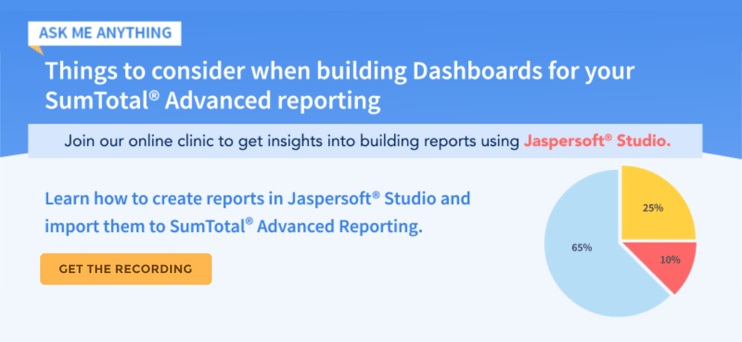/Chasma%20Blog%20Post%20Images/4-Tips-for-Creating-User-Friendly-Dashboards-in-HR-and-Learning-Applications.jpg?width=744&name=4-Tips-for-Creating-User-Friendly-Dashboards-in-HR-and-Learning-Applications.jpg)
One of the ways many HR and learning software vendors adapt their applications to the new world of data and analytics is to provide self-service dashboard design tools.
In some organizations, administrators and back-office report builders have been thrown into the role of dashboard designers. We can suppose that many hired experts or developed their in-house skills, but we sense that many have done either nothing or only a little and not very well.
You may have had training on how to create useful data visualizations with widgets, but none of what makes a helpful HR dashboard your users will love.
Dashboards Are for People
This article isn’t about the technical aspects of creating data visualizations or even the right one to use for any situation; it is about designing dashboards for people. Let us share what we have learned through our training, experience, and hard knocks so you can avoid some of the pain of not getting it right.
Avoid the “I’ll know what I want when I see it” syndrome
Good dashboard design starts with people. It means spending enough time with them that you understand the goals they need to attain when they use information. It begins with two questions:
- What are you trying to accomplish when you use information?
- What information do you use and how you use it to accomplish your goal?
At this point, if you move too fast both you and your dashboard customer will have an incomplete understanding of what information they require and how you should present it. You could find yourself in an endless round of revisions. Give your customers time to think, then ask again.
One Dashboard, One Purpose
A dashboard’s purpose is to help the user accomplish an objective. The data is a building block, not the goal. Dashboards are for people. Most modern tools give you the capability to create a tabbed display, so it is very little trouble to devote single tabs to a single task or objective.
Any user dashboard will likely have a scope broader than one data set. The user’s purpose may need several visualizations. An executive may need a panel with seventeen KPIs. The single use of that executive’s dashboard may be to see which KPIs are out of line or headed in the wrong direction.
Simplicity and the Six Second Rule
Your user should get the point of any visualization in a few seconds. Here are three ways to make that happen:
- Keep it simple. Avoid clutter by using only the components that are required to make the point. If it’s “nice to have” it’s nice to leave out.
- Make it easy for the user to identify what’s important. If it’s a change in a trend, highlight it with a different color. If it is one indicator out of line, try using conditional formatting to make it a brighter color.
- Be consistent with your color schemes and symbols. If lime green indicates good and orange indicates bad, make it so everywhere. If a clock icon means history, use it for history and nothing else.
Ask for Feedback
Users will not give you feedback unless you ask for it. If they run into a problem or a need they didn’t anticipate, they often will not come to you to update the dashboard. They are more likely to either find a workaround or stop using the tool — and you may never know until you ask. Do so, early and often.
Never Stop Communicating
As business needs change, so will your users’ needs change. Anticipate changes and make your users know you are there for them. In time, your users will become one of your most valuable resources in keeping up with their needs.
Chasma Place is an independent source for solutions that will help you keep pace with changes in the way your people work without ripping and replacing your existing systems.


